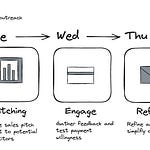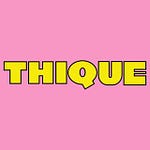A lot’s happened since the last update, and transparently when prioritizing time, this newsletter has become harder to justify. This is why over the coming months, I will be experimenting with some new formats, most likely focusing on adding value to people who are interested in the creator economy rather than only the tech startup side of things.
I would love to get your input on shaping this direction. For example, what are your current favorite newsletter formats, and why are they your favorite?
Things that went well
I.
The real MVP(s)
In the last issue, I shared that we built an MVP.
From user interviews, we found that discovering the right creator for a campaign was a marketer's biggest challenge. However, we learned that even if you fix the discovery issue, there are much bigger problems down the pipeline.
I talk about this more in the audio but try to avoid building too much for people who require a high touch level of service to succeed.
Key learning: Customer discovery can only get you so far; having something that people can use will uncover new insights. The balance is building just enough to get you to that valuable insight.
II.
Finding the hair on fire problem
The search for the hair-on-fire problem is the whole game when building something new. We believe we have found it, or if not, we are as close as we have ever been.
The summary of events has been
Helping creators improve their ability to close brand deals via Media Kits.
Key learning - Objectively not the fastest way of solving this problem
Moved to help an underserved market (SaaS companies) trying to leverage influencer/creator marketing. Despite influencer marketing being an established channel in the e-commerce world, it is still in the nascent stage for SaaS companies.
Key learning - When entering a nascent market, your biggest challenge is not finding a problem to solve but figuring out which problem you should solve and for whom.
Found a cohort of people who know influencer marketing works for them but are struggling to scale it.
Key learning - When building product solving operational problems > solving strategic ones.
Signals we discovered that we have landed on a hair-on-fire problem.
Customers are willing to spend time with you to figure out how you can help them.
When your customers are looking to formalize the relationship
When there is a dedicated budget in their department to solve this problem
What was the secret to finding the hair-on-fire problem? For us, staying in the game long enough that someone introduced us to a person with the hair-on-fire problem. Once we found them, we discovered the demographic, which became our new qualifier.
III.
The Great Conference Hack
Web Summit has 70,000 people attending. Unfortunately, it is one of those conferences where you only get what you put in. This year my friend Peter Duffy who runs Titans, a legal tech consulting firm, had an excellent idea of organizing his own meetup. Peter had spent the two weeks prior reaching out and getting people signed up. He had a massive level of interest, so with 48 hours’ notice, we decided to take the same format and apply it for people in the Growth space.

It was a major success as not only did we meet some fantastic people, but now we are working with several of them.
Peter also has a newsletter you can subscribe to and steal his other great ideas.
Key learning: Leave your sales pitch at home and focus on providing nothing but value to the people you want to surround yourself with.
"I've learned that people will forget what you said, people will forget what you did, but people will never forget how you made them feel." - Maya Angelou.
Things that did not go to plan
I.
Burnout signs
Web Summit can be full-on in a great way. It's generally five days of meeting hundreds of people and staying out until all morning hours. With the momentum we had built up until that point, we were afraid of losing it, so we just kept going. This turned into doing 12-hour days, seven days a week. I do not believe in grind culture, but sometimes you need to sprint, which was one of those times.
That sprint came at a cost, though. I woke up one day feeling like I got hit by a train, fearing it was covid. I just rested up, and within a few days of no laptops and many, many hours of sleep, I was back to normal. This was a real warning to me that you can't burn the candle at both ends for a very long time.
Key learning: A sprint can only be endured for so long. Sometimes you need to slow down to speed up.
II.
YC Application
This was my second time applying, but my first time with Lasso. Unfortunately, we didn't get an interview this time, but even since applying, the progress we made has been significant.
Key learning: No signal is a signal; use it as your motivator.
A Question For You
Misc
This section essentially abuses the structure I tried to commit to above.
Links to click on
A fantastic retrospective on building a company from the founder of Advisable.
Landing page inspirations
Creator educator and the biggest opportunity in the creator economy
The Creator Economy by Paul Saffo













Share this post